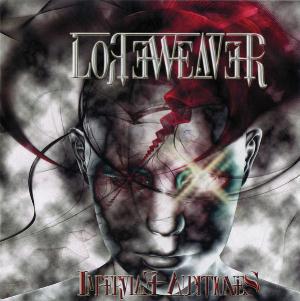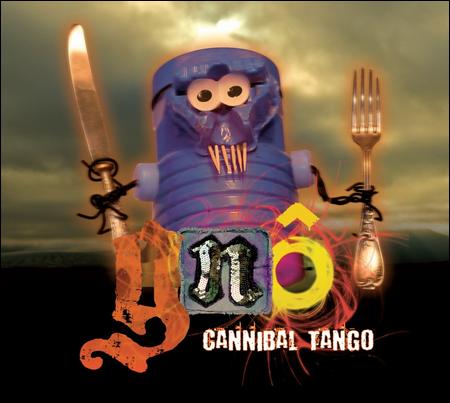TRACKLISTING:
1. Past Present (6:46)
2. 16 Feet Below (5:42)
3. Underpass (5:33)
4. Push Too (5:05)
5. Pendulum (6:31)
6. Depth Charge (6:20)
7. Of Age (6:40)
8. New Resolution (8:37)
LINEUP:
Dean Watson – all instruments
Two years after the excellent Unsettled, Canadian multi-instrumentalist Dean Watson is back with his sophomore effort, Imposing Elements – inspired like its predecessor by the work of Toronto-based artist Ron Eady. Both those who download the album from Watson’s Bandcamp page and those who opt for the physical object will be treated to an impressive cover depicting one of Eady’s austere, Gothic-tinged industrial landscapes, realized with the ancient encaustic technique.
The relationship between progressive rock (in all its manifestations) and the visual arts is a long-standing one, and for many devotees of the genre it is almost impossible to separate the music from the images that graced the covers of vinyl LPs in the Sixties and Seventies. Though Eady’s work suggests a Blade Runner-like universe (perhaps more suited to a highly technical metal band) than the bright-hued flights of fancy of Roger Dean and his ilk, it is interesting to see how Watson rendered the visuals in musical terms – stressing the painting’s undeniably majestic aspect rather than its bleakness.
With impressive technical and compositional skills honed in years of experience on the music scene, Watson is not your typical self-important artist who delivers one vanity project after the other, regardless of whether quality matches quantity. Even someone who, like me, is generally a bit wary of the ubiquitous “solo-pilot” releases made possible by modern technology and the widespread use of the Internet will not fail to recognize that Watson is someone who genuinely cares about producing high-quality music, rather than out to bludgeon his audience over the head with pointless pyrotechnics.
While Unsettled was a classy, eminently listenable effort, Imposing Elements marks a big step ahead for Watson, both as an instrumentalist and a composer. Firmly rooted in the progressive jazz-fusion tradition represented by the likes of Jeff Beck circa Blow by Blow and Wired, Allan Holdsworth, John McLaughlin, Bruford and Brand X (among many others), the album transcends the divide between conservatism and innovation, proving that great music does not necessarily have to be groundbreaking. Imposing Elements is a more understated effort than Unsettled, dispensing almost completely with the (admittedly trendy) metal overtones of its predecessor, while raising the bar in terms of composition. Indeed, for his sophomore effort, Watson seems to have gone for a more laid-back mood, allowing for frequent tempo changes but never pushing too hard on the accelerator. Balance and restraint are the name of the game – something that is often conspicuously absent in the work of many modern acts.
Watson’s first love, the keyboards, are the undisputed protagonists of Imposing Elements, creating rich layers of sound and seamlessly sparring with the guitar (which on this album takes on more of a supporting role). The whistle of the synths has been decidedly toned down this time around, while organ and piano (both electric and acoustic) frequently step into the limelight. Watson even brings in the iconic mellotron to add a touch of symphonic lushness, especially evident in the soothingly meditative “Pendulum”. The drums, with their surprisingly organic sound, lay down intricate patterns that have elicited comparisons with jazz-rock luminaries such as Bruford or Cobham.
Instrumentally speaking, however, the biggest improvement is the presence of a real electric bass, especially effective in the dramatic “Of Age” (which is the closest the album gets to the prog-metal mood of the previous release), as well as stately, evocative opener “Past Present”. Watson also shines at creating rarefied atmospheres, as in slow-burning closer “New Resolution”, hovering between a loose, jazzy texture and a tighter, brisker pace, or the electronics-laden “Depth Charge”. Percussion shines in “Push Too”, bolstering the exertions of synth and guitar; while “16 Feet Below” and “Underpass” run the gamut of tempo and mood changes – the latter displaying an intriguingly funky swagger.
With tracks between 5 and 8 minutes, and a total running time of 52 minutes, Imposing Elements never outstays its welcome. While a lot of jazz/fusion may come across as formally impeccable but rather emotionless, Dean Watson’s music possesses a thoroughly human dimension, revealing the artist’s dedication to his craft. I am sure that Watson’s compositions would transfer effortlessly to a stage setting, although the current music scene makes it increasingly difficult for musicians to perform live, therefore encouraging studio-only projects. However, even if this never happens, Imposing Elements remains an outstanding release, highly recommended to fans of progressive fusion and instrumental music in general.
Links:
http://deanwatson.bandcamp.com/album/imposing-elements
http://www.cdbaby.com/cd/deanwatson12









